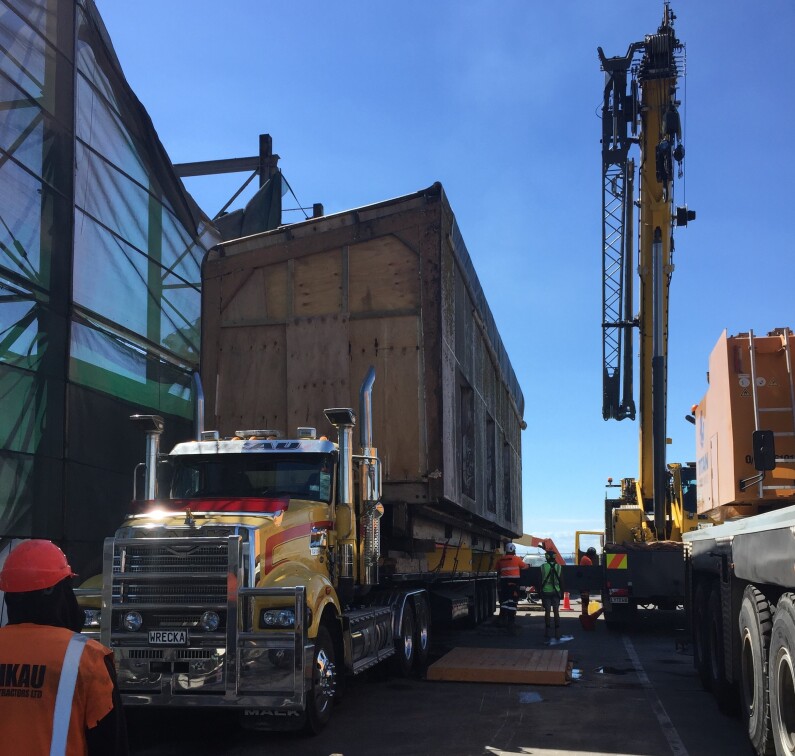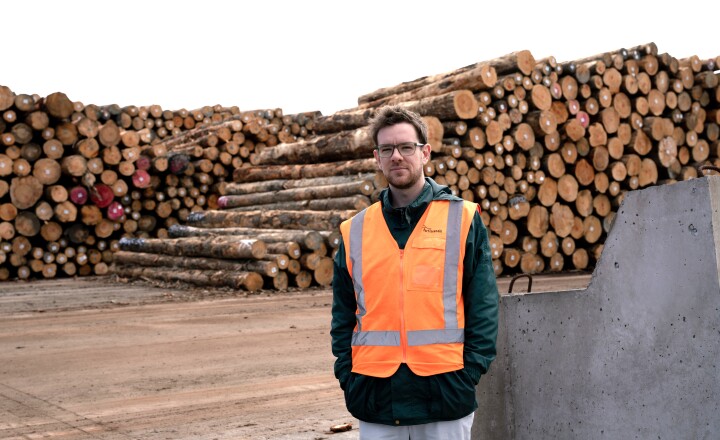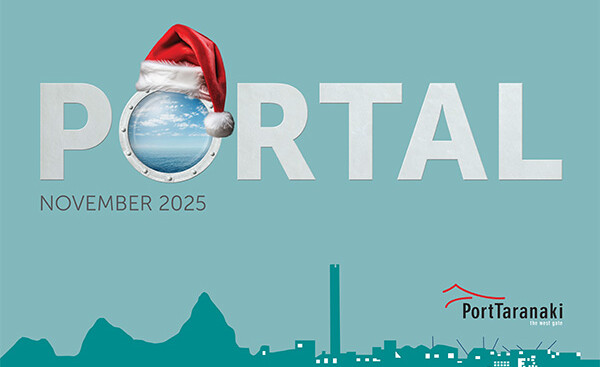
The Port Taranaki skyline is taking on a new look as a structure that has risen above Moturoa Wharf for 40 years and was a key part of the port’s expanding export trade is removed.
The Moturoa Gallery, as it is known, is a covered conveyor that was built to carry Taranaki-produced urea to ships for export. The urea was railed in and stored at the nearby Moturoa Store.
In a major project, as part of Port Taranaki’s ongoing asbestos management programme, the gallery is being dismantled and removed, there are plans to reclad the store, and several small ancillary buildings are being demolished. The gallery has been idle for a number of years and is no longer required, while options for the store are being considered.
The Moturoa Gallery and Moturoa Store were built in the early 1980s to support the establishment of the Kapuni ammonia-urea plant, which was part of the Muldoon government’s ‘Think Big’ strategy to boost New Zealand’s infrastructure and decrease its reliance on imports. The South Taranaki production plant used gas from the nearby natural gas fields to produce urea, with initially 80% of the urea exported.
Port Taranaki general manager of infrastructure John Maxwell started at Kapuni in the technical department and worked his way up to general manager of operations in a more than 30-year career at Ballance Agri-Nutrients Ltd.
He says in its heyday, urea export at Port Taranaki was a bustling operation.
“Every day about 250 tonnes of urea was railed in and stored at the port – there was about 15,000 tonne in the store. Then, using two in-store conveyors and working simultaneously with a couple of loaders, just over 700 tonne of urea an hour was moved out and up along the gallery conveyor and loaded into a waiting ship’s hold via a movable loading arm,” he says.
With increased farming in New Zealand, nowadays the domestic demand for urea fertiliser outstrips supply, so urea is imported.
Urea is loaded from the ship directly into waiting trucks via grabs through the use of port hoppers.
John is the port project sponsor for the Moturoa gallery and store work, and says the project, which is being carried out by Nikau Construction Limited, is progressing well.
“It’s on schedule to be completed in June,” he says. “A key part throughout has been establishing a work plan that fits around shipping to enable trade to continue.”
Project director Ludo Galliegue says with the first milestone of cleaning up the site having been reached, the focus is now on the removal of the 170m long steel and timber gallery, which sits approximately 14m above the wharf.
“Each of the eight modules that make up the conveyor gallery are being brought down one at a time. In parallel, we are preparing for the redevelopment of the area, including the recladding of the store, and replacement of the gallery structure with new LED light towers, to support the wharf operations,” he says.
John says the project is another step in the port’s evolution, with the continual focus on providing facilities and services that meet the customers’ needs.
“The conveyor gallery was an important part of Port Taranaki’s growth and development and, being high and visible, it is certainly going to give the port a different profile once removed, particularly for those out on the water looking back at the port.
“The nature of trade and the shipping and logistics sector continues to change, and we are continuing to adapt to meet those changes.”


